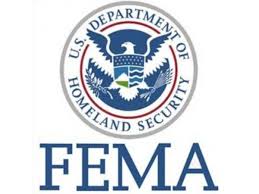 AUSTIN, Texas — When disaster strikes, your first thoughts will likely be of your family: “Are they OK? How Can I reach them? How can I let them know I’m alright?”
AUSTIN, Texas — When disaster strikes, your first thoughts will likely be of your family: “Are they OK? How Can I reach them? How can I let them know I’m alright?”
Electricity is often disrupted by extreme weather, and even when service returns, cell phone systems may be overwhelmed by call volume. Creating a communication plan today will put your mind at ease and help you reunite with your loved ones if you become separated during a natural disaster.
Follow the tips below to create your plan, or visit https://go.usa.gov/xQfNX for more information and an easy-to-use Family Communication Plan template:
- Write down each family member’s cell number and email address as well as important numbers like schools, doctors and insurance companies. Every family member should carry this list at all times.
- Arrange a meeting place in your neighborhood and another place out-of-town in case of evacuation. If you might need shelter from a hurricane or tornado, choose a windowless room on the lowest level of a sturdy building, or a tornado safe room or storm shelter.
- After a disaster, text messages may be more likely to connect than phone calls. If phone or text contact cannot be established, try emailing, posting on social media or making an Internet-based phone call. If you have no cell phone, pick up a prepaid phone card today to use in case of disaster.
- Maintaining a landline phone in your home may be helpful in an emergency, as that network may be less congested than mobile lines. You also may find long-distance calls more effective than local calls, because local lines may be jammed, so designate an out-of-town contact person for your family.
- Each family member should store an emergency contact in their phone under the name “In Case of Emergency,” which emergency responders know to look for. Also make sure to sign up for emergency alerts from your school, workplace and/or local government.
- Ensure your plan will run smoothly by rehearsing it now. Practice contacting each other through the various means available, and practice meeting up at your designated points.
For more information on Hurricane Harvey and Texas recovery, visit the Hurricane Harvey disaster web page at www.fema.gov/disaster/4332, Facebook at www.facebook.com/FEMAharvey, the FEMA Region 6 Twitter account at www.twitter.com/FEMARegion6 or the Texas Division of Emergency Management website at https://www.dps.texas.gov/dem/.

